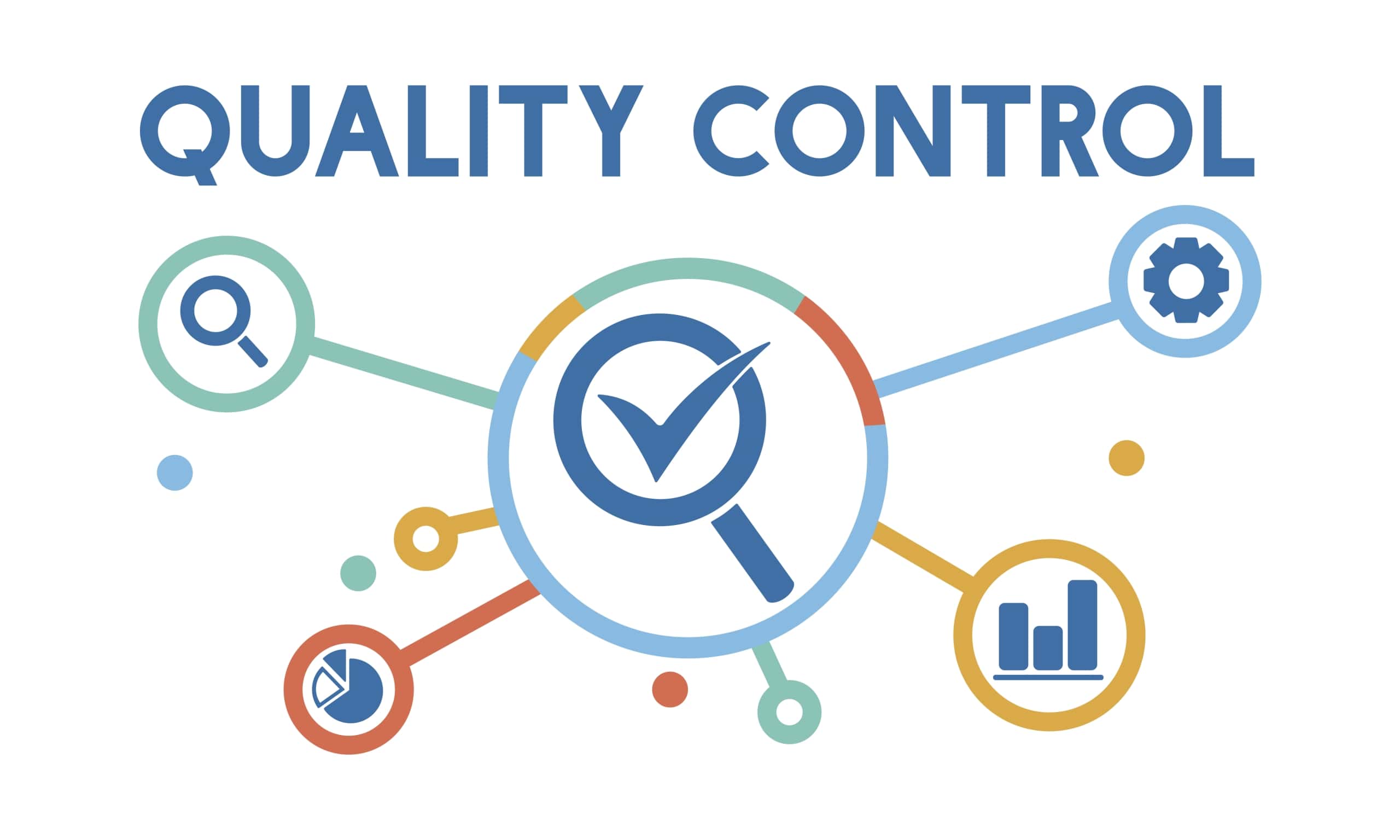Issue #1: Raw Material Quality Control
Issue: Using low-quality raw materials in wet wipes can compromise their safety, effectiveness, and overall quality, leading to consumer dissatisfaction and potential health risks.
Troubleshooting:
- Supplier Qualification:
Establish strict standards for choosing suppliers of raw materials including nonwoven fabric, solution ingredients, and packaging materials. Assess suppliers by examining their history, qualifications, manufacturing methods, and compliance with regulatory requirements. Forming alliances with trustworthy suppliers decreases the probability of obtaining inferior supplies. - Material Inspection Upon Arrival:
Establish comprehensive inspection procedures for evaluating the quality and integrity of raw materials upon receipt. Perform visual inspections to detect any damage, contamination, or anomalies. Conduct physical tests and analysis, such as measuring fabric thickness or chemical composition, to confirm material specifications and assure adherence to quality standards. - Quality Checking:
Conduct thorough quality testing on raw materials to assess their appropriateness for wet wipes manufacturing. This involves conducting tests to determine physical qualities such as tensile strength and absorbency, chemical composition including pH and viscosity, and microbiological safety including microbe counts and endotoxin levels. Examining test outcomes offers useful information on material performance and possible hazards, aiding in determining whether to approve or reject incoming supplies. - Traceability and Documentation:
Keep precise documentation of raw material acquisition, examination, and consumption to guarantee traceability and responsibility. Establish comprehensive documentation systems to monitor the source, characteristics, and evaluation of every batch of raw materials. This aids in promptly identifying and resolving quality concerns and ensuring adherence to regulatory standards. - Storage and Handling:
Follow correct storage and handling procedures to maintain the quality and integrity of raw materials throughout manufacturing. Ensure goods are stored in specified locations with regulated environmental conditions, including temperature and humidity, to avoid deterioration or pollution. Utilise FIFO inventory management to prioritize older supplies, minimizing the risk of expiry or degradation.
Using these troubleshooting procedures, wet wipe manufacturers can efficiently resolve issues arising from low-quality raw materials and maintain the quality of manufacturing. This is crucial for providing high-quality products to customers and reducing potential hazards.
Issue #2: Equipment Malfunction
Issue: Wet wipes machine failures may interrupt wet wipes manufacturing schedules, resulting in expensive downtime, lost productivity, and possible quality concerns in the end product.
Troubleshooting:
- Regular upkeep:
Problem: Inadequate routine maintenance may lead to equipment breakdowns and malfunctions.
Troubleshooting: Establish a thorough maintenance program for all manufacturing equipment based on manufacturer recommendations and requirements. Consistently examine and maintain equipment parts such as motors, belts, bearings, and seals to detect and resolve any problems before they worsen. - Operator Training:
Problem: Operators may not possess the requisite skills and expertise to recognize early indications of equipment breakdown or conduct fundamental troubleshooting.
Troubleshooting: Provide comprehensive training programs for equipment operators, including operation methods, maintenance activities, and troubleshooting strategies to address issues effectively. Enable operators to identify unusual equipment performance, do regular inspections, and swiftly resolve small problems to avoid periods of inactivity. - Management of Spare Parts:
Problem: Lack of crucial spare parts might extend the duration of machine downtime during maintenance.
Troubleshooting tip: Keep a well-organized inventory of essential spare parts and components to ensure they are readily available for prompt replacement in the event of failures. Cultivate connections with dependable suppliers to expedite the acquisition of replacement parts as necessary, reducing production interruptions. - Predictive Maintenance:
Problem: Employing reactive maintenance procedures might lead to unforeseen equipment breakdowns and interruptions in production.
Troubleshooting: Utilise predictive maintenance methods like vibration analysis, thermal imaging, and oil analysis to detect possible equipment problems before they cause failures. Consistently monitor equipment condition and performance indicators to identify problems and plan maintenance actions appropriately, enhancing equipment dependability and reducing downtime. - Ongoing enhancement:
Problem: The absence of ongoing improvement efforts might result in repeated equipment failures and inefficiency.
Troubleshooting: Cultivate a culture of ongoing enhancement in the organization, motivating personnel to pinpoint possibilities for improving equipment performance and dependability. Establish feedback systems to identify and resolve common problems, use data-driven insights to improve maintenance plans, and increase equipment efficiency.
Issue #3: Inadequate Moisture Control
Issue: Insufficient moisture regulation in the manufacturing of wet wipes may cause variations in moisture content in the wipes, resulting in flaws, decreased effectiveness, and limited shelf life.
Troubleshooting:
- Moisture Control Systems Calibration:
Problem: Incorrect calibration of moisture control devices might result in uneven moisture levels across wet wipe batches.
Troubleshooting: Consistently calibrate moisture control systems to guarantee precise and accurate moisture monitoring and management throughout the wet wipes manufacturing process. Perform calibration checks as per manufacturer guidelines and industry norms to retain peak performance. - Environmental Conditions Monitoring:
Problem: Changes in temperature and humidity may influence the moisture level in wet wipes, leading to variations in product quality.
Troubleshooting: Implement monitoring systems to observe environmental conditions within the industrial plant. Ensure stable temperature and humidity levels suitable for wet wipes manufacturing and take corrective actions, including adjusting HVAC or using dehumidifiers, to reduce fluctuations and maintain constant moisture management. - Modification of Formulation Parameters:
Problem: Varying formulation parameters may lead to differences in moisture levels across batches of wet wipes.
Troubleshooting: Examine and modify formulation parameters, such as solution composition and application rates, using real-time moisture readings and input from quality control inspections. Adjust production parameters to ensure consistent moisture distribution and enhance product efficiency. - Optimizing Drying Parameters:
Problem: Incorrect drying settings might result in inadequate or excessive moisture extraction from wet wipes, impacting their consistency and effectiveness.
Troubleshooting: Adjust drying parameters including temperature, air velocity, and dwell time to achieve complete and even drying of wet wipes while avoiding excessive or insufficient drying. Regularly test and monitor dried wipes to ensure moisture consistency and modify drying conditions as needed. - Product testing at regular intervals:
Problem: Insufficient monitoring of moisture levels in completed wet wipes might lead to unnoticed fluctuations or flaws.
Troubleshooting: Establish regular product testing procedures to evaluate moisture consistency and general product quality across wet wipes batches. Perform moisture content analysis and sensory assessments to detect deviations from requirements and implement corrective steps to resolve underlying problems in the manufacturing process.
Wet wipes manufacturers may efficiently resolve difficulties linked to poor moisture management in wet wipes manufacturing by using these troubleshooting procedures. This will help ensure consistent product quality and performance. Ensuring precise calibration of moisture control systems, monitoring environmental conditions, adjusting formulation parameters, optimizing drying settings, and conducting regular product testing are crucial for maintaining ideal moisture levels and attaining targeted product qualities.
Issue #4: Contamination
Issue: Contamination during the manufacturing process of wet wipes poses a significant risk to the quality of the product, the safety of consumers, and the brand’s reputation. Bacteria, mold, or foreign particles can all be contaminants that weaken the effectiveness, safety, and quality of the wipes. This can lead to product recalls, consumer complaints, and regulatory issues.
Troubleshooting:
- Stringent hygiene protocols:
Problem: Insufficient compliance with hygiene measures for staff, equipment, and manufacturing facilities may result in microbial contamination of wet wipes.
Troubleshooting: Strict hygiene protocols must be enforced, including frequent handwashing, correct use of personal protective equipment (PPE), and disinfection of equipment and surfaces. Precise protocols for cleaning and sanitizing manufacturing facilities should be established to minimize the risk of microbiological infection. - Equipment Sanitization:
Problem: Inadequate cleaning and sanitization of equipment may lead to the development of microorganisms and cross-contamination in the manufacturing of wet wipes.
Troubleshooting: Establish and execute thorough cleaning and sanitization procedures for all manufacturing equipment, such as tanks, mixers, filling machines, and packaging lines. Utilize authorized disinfectants and sanitizers to efficiently eliminate microbiological contaminants and inhibit their growth in the manufacturing setting. - Testing of raw materials:
Problem: Contaminated raw materials may introduce microbial pathogens or other particles into the wet wipes production process.
Troubleshooting: Thoroughly test and check arriving raw materials, such as nonwoven fabric, solution components, and packaging materials, to identify any contamination. Conduct microbiological analysis, visual inspections, and quality testing to verify raw materials’ safety and quality before their manufacturing utilization. - Air Filtration and Ventilation:
Problem: The manufacturing facility’s inadequate air quality and ventilation may lead to airborne contamination of wet wipes.
Troubleshooting: Implement HEPA filters and ventilation systems to eliminate airborne particles, dust, and microbiological pollutants from the manufacturing area. Consistently examine and upkeep air filtration systems to guarantee peak function and reduce the chances of contamination. - Microbial Analysis:
Problem: Insufficient monitoring of microbiological contamination levels in completed wet wipes might lead to unnoticed quality problems and safety risks.
Troubleshooting: Establish routine microbiological testing procedures to evaluate the microbial quantity and safety of completed wet wipe batches. Perform microbiological analysis to ensure adherence to safety standards and regulations, including total viable counts, yeast and mold counts, and particular pathogen tests.
Wet wipes manufacturers may efficiently reduce contamination difficulties in wet wipes manufacturing by using these troubleshooting procedures, thereby maintaining the safety, quality, and integrity of the goods. Adhering strictly to hygiene protocols, ensuring proper sanitization of equipment, conducting thorough testing of raw materials, installing air filtration and ventilation systems, and performing regular microbial testing are crucial measures to prevent contamination and uphold product quality during production.
Issue #5: Packaging Defects
Issue: Packaging flaws in wet wipes manufacturing may reduce product quality, affect customer happiness, and damage brand reputation. Common package problems such as incorrect sealing, wrinkled packing, misaligned labeling, and broken packaging materials may diminish the visual appeal, usefulness, and safety of wet wipes.
Troubleshooting:
- Optimize Packaging Machinery Settings:
Problem: Inaccurate packing equipment settings might lead to sealing issues, wrinkled packages, or misaligned labels.
Troubleshooting: Examine and enhance packaging equipment parameters such as sealing temperature, pressure, and speed to guarantee accurate sealing and labeling of wet wipes pouches. Perform regular inspections and fine-tuning to maintain peak performance and reduce packaging flaws. - Operator Training and Inspection:
Problem: Insufficient operator training and inspection processes might lead to the oversight of packing flaws in the manufacturing process.
Issue: Offer thorough training to packing personnel on correct equipment use, inspection methods, and fault recognition. Enable operators to visually verify wet wipes pouches during production, instantly detecting and resolving any packaging flaws to avoid faulty items from reaching customers. - Quality Control Checkpoints:
Problem: Inadequate quality control checkpoints might lead to unnoticed packing errors before items being sent from the manufacturing line.
Troubleshooting: Establish stringent quality control measures at several points of the packing process to promptly identify and correct any flaws. Use automated vision systems and inspection equipment to conduct visual inspections, seal integrity testing, and label alignment checks to ensure that only conforming items are approved for distribution. - Inspect Packaging Materials:
Problem: Inferior or damaged packaging materials might lead to flaws in the packing of wet wipes during manufacturing.
Troubleshooting: Thoroughly check incoming packing materials such as pouches, lids, labels, and sealing materials for damage, contamination, or flaws. Discard or isolate faulty packing materials and collaborate with suppliers to resolve quality concerns and avoid repeat occurrences. - Ongoing Enhancement:
Problem: Without ongoing improvement efforts, there is a risk of persistent packaging problems and inefficiencies.
Encourage a culture of continuous improvement in the packaging department by motivating personnel to investigate the underlying causes of packaging errors and apply remedial measures. Examine data from defect tracking systems, customer input, and production KPIs to detect patterns and possibilities for improving processes and fostering creativity.
Wet wipes manufacturers may easily resolve packaging problems in wet wipes manufacturing by using these troubleshooting procedures, guaranteeing the continual supply of high-quality goods to customers. Optimizing packaging equipment settings, providing operator training, conducting inspections, implementing quality control checkpoints, inspecting packaging materials, and pursuing continuous improvement are crucial for reducing packaging errors and maintaining product integrity throughout production.






